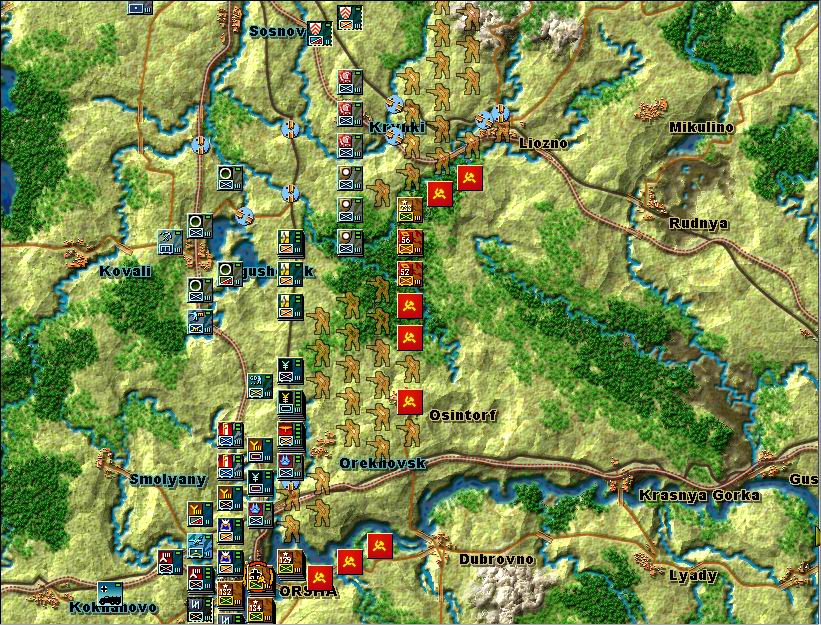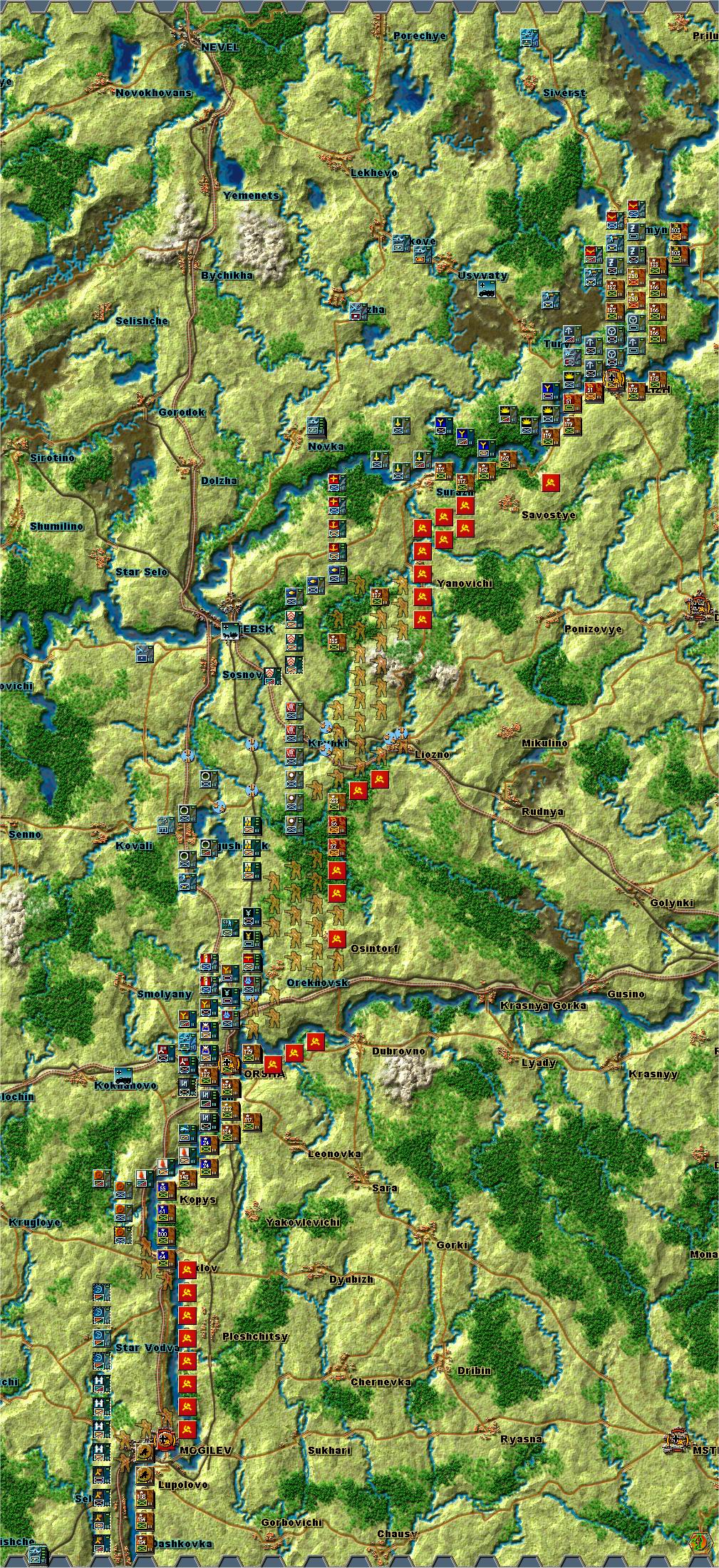
Both sides have very little to report. Keating makes a couple of ineffectual attacks, and Trout makes none at all. Worse for Trout, and the notoriously ephemeral approval of the commissars, Trout has elected to retreat from around ORSHA, though the city itself is still held, retreat even further SE of VITEBSK and been forced back across the river at VELIZH on the Dvina River in the north, though again VELIZH itself is still strongly held.

The situation at ORSHA will be Trout’s greatest concern, (as shown above) as a large gap has opened in his lines, and though Russian reserves can doubtless be rushed in, large areas of Clear terrain will make defence difficult.
It might be useful at this juncture to examine the relevant portions of the entire battlefield after four days (see below). It seems clear that Keating’s main effort is at and just above ORSHA and that he is also making serious attempts to turn the extreme northern flank. By contrast, he is currently making no attempt at MOGILEV, or even at forcing a crossing of the Dnepr between ORSHA and MOGILEV.
Here in Berlin, we offer the following appreciation of the situation. General Keating (and the entire German High Command) are making a mistake. They should be forcing crossings of the Dnepr below ORSHA at the bridge at SHKLOV and east of ORSHA at the bridge at DUBROVNO. Attacking at these places will create the potential for a large pocket at ORSHA, forcing the Russians to give up large portions of defensive river line. Attacking at bridges will ensure good supply for the attacking force. Attacking at SHKLOV will also put a large force on the eastern side of the Dnepr in a position likewise to envelop MOGILEV, which Keating’s current attack places under no pressure at all.
